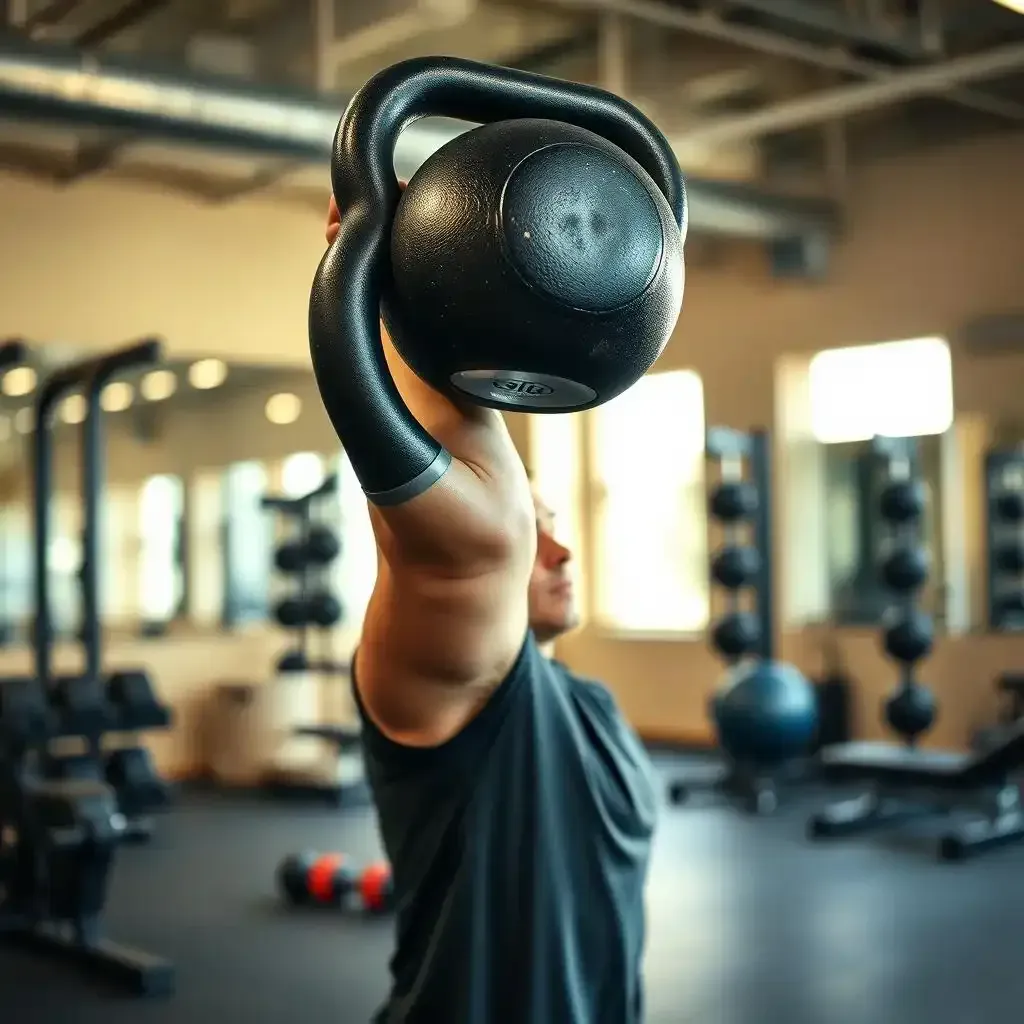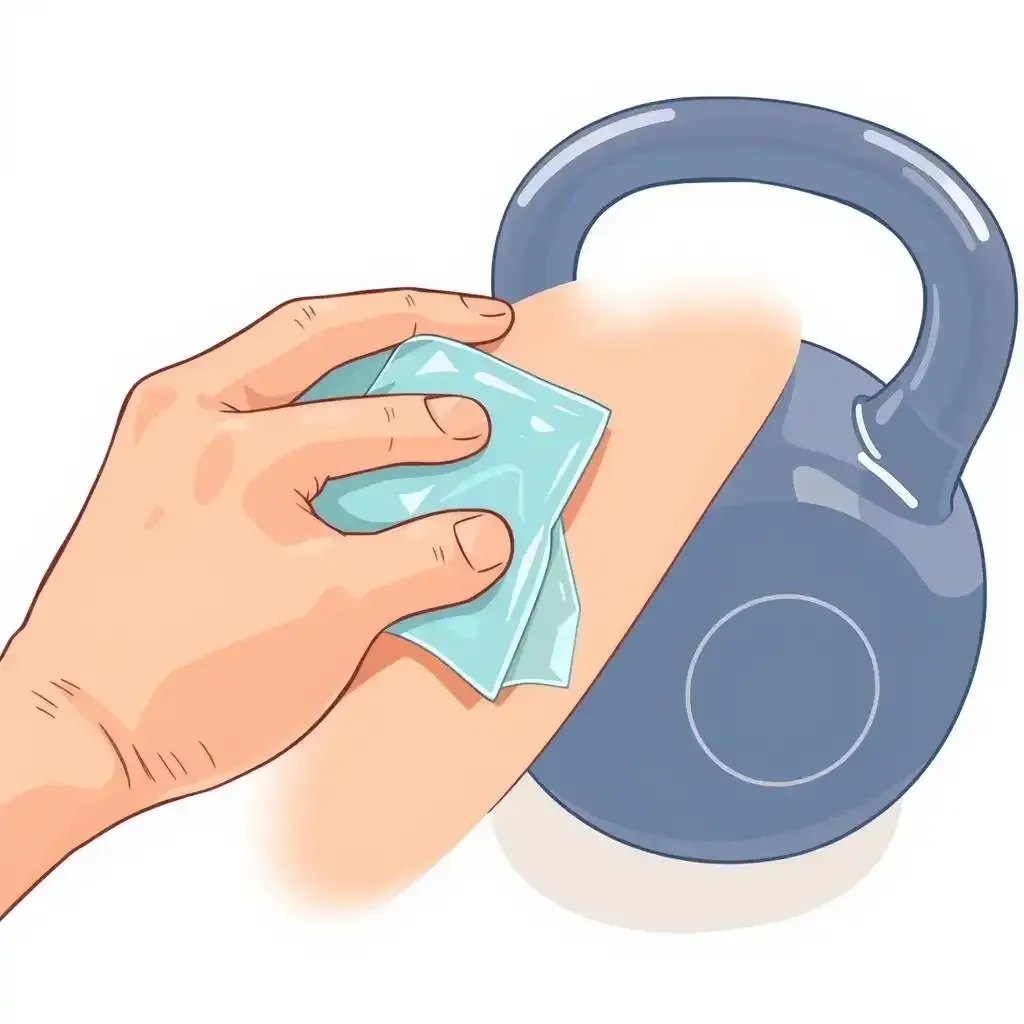Table of Contents
Kettlebells are more than just a trendy workout tool; they're a game-changer for injury recovery. Whether you've tweaked your shoulder or are dealing with a nagging elbow, kettlebell exercises can help you regain strength, flexibility, and mobility. This article from kettlebellworkout.homes will guide you through the basics of kettlebell injury recovery, common injuries, key exercises, and practical tips to ensure a successful rehabilitation process. So, whether you're a seasoned kettlebell enthusiast or a beginner, stick around to uncover how these versatile weights can help you get back on your feet.
Kettlebell Injury Recovery: The Basics

Kettlebell Injury Recovery The Basics
Understanding Kettlebell Injuries
Hey there, fellow fitness enthusiast! Let's talk kettlebell injuries. It's easy to get swept up in the excitement of kettlebell training – those swings are seriously satisfying! But, like any workout, there's a risk of injury if you're not careful. Think of it like learning to ride a bike; you'll probably wobble a bit at first, maybe even fall. The key is to learn proper form and build up strength gradually. Don't try to conquer the world with a 50-pound kettlebell on your first day! Start slow, focus on your technique, and listen to your body. If something feels off, stop and don't push through the pain.
Common injuries include strains, sprains, and even more serious issues like rotator cuff tears if you're not careful. This isn't to scare you, it's to emphasize the importance of proper technique and a gradual increase in weight. Remember that awesome feeling of accomplishment you get after a killer kettlebell workout? That feeling is even better when you're injury-free! Plus, preventing injuries means you can keep enjoying those workouts for years to come, instead of taking a long break for recovery. Check out our guide on kettlebell injury prevention for more tips!
Common Kettlebell Injury | Likely Cause | Prevention Tip |
|---|---|---|
Lower back pain | Poor form during swings, too much weight | Focus on proper hinge movement, start with lighter weights |
Shoulder pain | Improper pressing technique, overuse | Master the bottom-up press, incorporate shoulder mobility exercises |
Wrist pain | Weak wrists, incorrect grip | Strengthen wrists, use wrist wraps if needed |
The Role of Proper Form
Okay, so you're ready to jump into kettlebell training. Fantastic! But before you even think about grabbing a kettlebell, let's talk about the absolute MOST important thing: proper form. Imagine trying to build a house without a blueprint – it's gonna be a disaster! Proper form is your blueprint for a successful and injury-free kettlebell trip. It's the difference between a satisfying workout and a trip to the doctor.
This isn't just about looking good either; it's about protecting your body. Poor form means you're not using your muscles efficiently, and that puts extra stress on your joints and ligaments. This can lead to pain, discomfort, and, you guessed it, injuries! So, take your time, learn the correct techniques, and don't rush into heavier weights. You can find more info on our kettlebell form guide page. There are plenty of resources available, and don't be afraid to ask for help from a qualified trainer.
- Start with lighter weights
- Focus on slow, controlled movements
- Engage your core muscles
- Maintain proper posture
- Listen to your body
Gradual Progression is Key
Think of building strength like climbing a mountain. You wouldn't try to summit Everest on your first hike, would you? You'd start with smaller hills, gradually increasing the difficulty as you get stronger and more confident. Kettlebell training is the same. You need to build a solid foundation before you start tackling heavier weights and more complex exercises.
Start with lightweight kettlebells and focus on mastering the basic movements. Once you feel comfortable with those, you can gradually increase the weight and add more challenging exercises. This approach helps your body adapt to the demands of kettlebell training, minimizing your risk of injury. Don't be impatient. Slow and steady wins the race, especially when it comes to avoiding injuries. Want a plan? Check out our kettlebell workout plan for beginners.
Common Kettlebell Injuries and Their Recovery
So, you've been hitting the kettlebells hard and maybe a bit too fast. Injuries can happen, but don't worry, you're not alone. Let's talk about some common kettlebell injuries and how to recover from them. Think of it like learning to ride a bike; you might fall a few times, but you can definitely get back up and keep going.
One of the most common injuries is lower back pain. This usually happens when you're doing swings with poor form or using too much weight. The key to recovery is to start with lighter weights and focus on your form. Make sure you're hinging at the hips, not rounding your back. If you're still feeling pain, take a break and do some gentle stretching and core exercises. Check out our for more advice.
Common Kettlebell Injury | Likely Cause | Recovery Tip |
|---|---|---|
Lower back pain | Poor form during swings, too much weight | Start with lighter weights, focus on proper hinge movement |
Shoulder pain | Improper pressing technique, overuse | Master the bottom-up press, incorporate shoulder mobility exercises |
Wrist pain | Weak wrists, incorrect grip | Strengthen wrists, use wrist wraps if needed |
Another frequent injury is shoulder pain. This often occurs when you're doing presses or snatches with poor form. The bottom-up press is a great exercise to improve shoulder stability and mobility. It forces you to keep your shoulder in a more stable position, reducing the risk of injury. If you're dealing with shoulder pain, start with the bottom-up press and include some mobility exercises. You can find more tips in our .
Wrist pain is also a common issue, especially if you're new to kettlebell training. Weak wrists and an incorrect grip can lead to strain. To prevent and recover from wrist pain, start with lighter weights and focus on your grip. Strengthening your wrists with specific exercises can help a lot. Using wrist wraps can also provide extra support. For more on this, check out our .
Key Kettlebell Exercises for Injury Recovery

Key Kettlebell Exercises For Injury Recovery
The Bottom-Up Press: Your Shoulder's Best Friend
When it comes to shoulder injuries, the bottom-up press is a game-changer. This exercise forces your shoulder to stay in a stable position, which helps improve your shoulder stability and mobility. Visualize this: you're holding the kettlebell by its handle, with the weight flipping upside down. This position makes it super hard to lose control, forcing your shoulder to work in a more balanced and controlled way.
Start with a lightweight kettlebell and focus on slow, controlled movements. If you're new to kettlebells, check out our for more tips on getting started. The bottom-up press is not just about strength; it's about control. So, take your time and feel the difference in your shoulder stability.
- Improves shoulder stability
- Enhances mobility
- Reduces risk of injury
Turkish Get-Ups and Windmills: Flexibility and Strength Combined
Turkish get-ups and windmills are like the Swiss Army knives of kettlebell exercises. They combine strength, flexibility, and mobility into one comprehensive movement. Think of them as a full-body workout that specifically targets your shoulders, hips, and core. They help you regain the range of motion you might have lost due to an injury.
Start with a lightweight kettlebell and focus on the form. The Turkish get-up, in particular, is a complex movement, so it's essential to break it down step by step. Here’s a quick breakdown: lie on your back with the kettlebell in one hand, press it overhead, and get up to a standing position without letting the kettlebell fall. If you need a visual guide, our page has some great videos to help you master these moves.
Tips for a Successful Kettlebell Injury Recovery

Tips For A Successful Kettlebell Injury Recovery
Okay, so you've had a little mishap with your kettlebell – we've all been there! Don't beat yourself up; it happens. Think of your body like a finely tuned sports car; it needs the right care and maintenance to perform at its best. Ignoring a little twinge can turn into a major problem down the road, trust me.
First things first: rest! I know, it's tempting to push through the pain, but that's a recipe for disaster. Give your body time to heal. It's not a sign of weakness; it's smart self-care. Think of it like this: you wouldn't try to run a marathon with a flat tire, would you? Get the right amount of sleep, take it easy, and listen to your body's signals. Need some extra support? Check out our guide on kettlebell recovery methods.
- Rest and recover
- Ice the injured area
- Gentle stretching
- Over-the-counter pain relievers (as needed)
Next, ice is your new best friend. It reduces swelling and inflammation – two major culprits in injury recovery. Think of ice as a tiny superhero, fighting off the bad guys in your body. Apply ice for 15-20 minutes at a time, several times a day. Don't apply ice directly to your skin; wrap it in a thin towel first. For more targeted recovery, check out our pain management guide.
Gentle stretching is another key player in the recovery game. It helps to maintain flexibility and prevent stiffness. Think of your muscles like rubber bands – if you don't stretch them regularly, they can become tight and brittle. Start with gentle stretches and gradually increase the intensity as your pain subsides. Remember, you're not trying to break any records here; slow and steady wins the race.
Injury | Recovery Time | Tips |
|---|---|---|
Minor muscle strain | 1-2 weeks | Rest, ice, gentle stretching |
Sprain | 2-6 weeks | Rest, ice, compression, elevation (RICE) |
More serious injury | Seek professional help! | Doctor visit, physical therapy |
Finally, don’t hesitate to seek professional help if your injury is severe or doesn't improve after a few days. A physical therapist can help you create a personalized recovery plan and provide guidance on exercises to help you regain strength and mobility. They're experts at helping you get back on your feet – literally! Want more tips on preventing future injuries? Check out our .
Remember, recovering from a kettlebell injury takes time and patience. Don't rush the process; your body will thank you for it in the long run. Focus on gradual progress, listen to your body, and celebrate your wins, no matter how small. You got this!
"Patience is bitter, but its fruit is sweet." - Jean-Jacques Rousseau
Final Thought
Kettlebell injury recovery is a powerful approach to regaining your strength and mobility. By understanding the basics, common injuries, and key exercises, you can tailor your rehabilitation progression to suit your needs. Remember, patience and consistency are key. With the right approach and a bit of effort, you can make a full recovery and get back to your active lifestyle. For more tips and exercises, visit kettlebellworkout.homes.